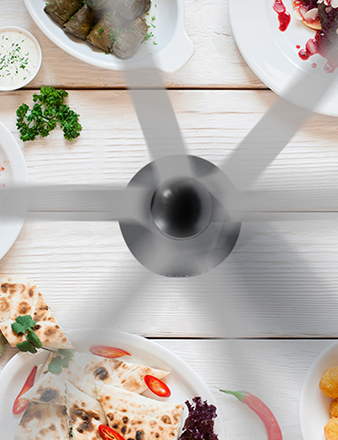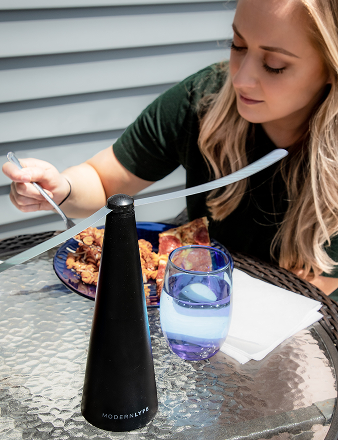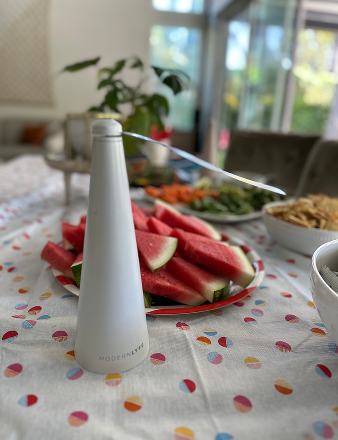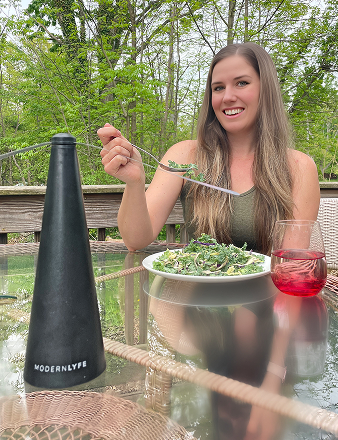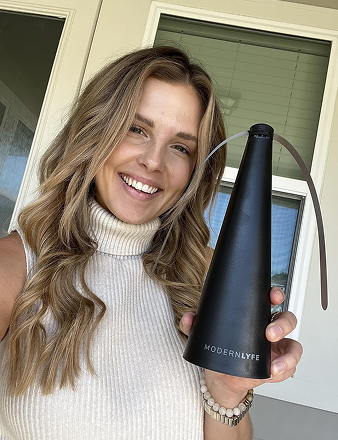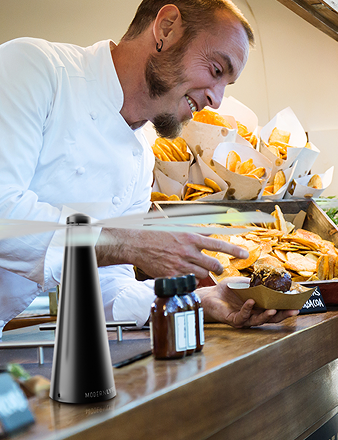Flies aren't just annoying—they're a direct threat to your restaurant's reputation and your customers' health. From a diner's perspective, one fly buzzing around their table instantly undermines their trust in your kitchen's cleanliness. In the age of instant online reviews, that single fly can become a one-star rating that damages your business.
A solid fly control strategy, including choosing the right fly spray for restaurants, is non-negotiable in the food service industry.
Why Your Restaurant Needs a Serious Fly Control Strategy
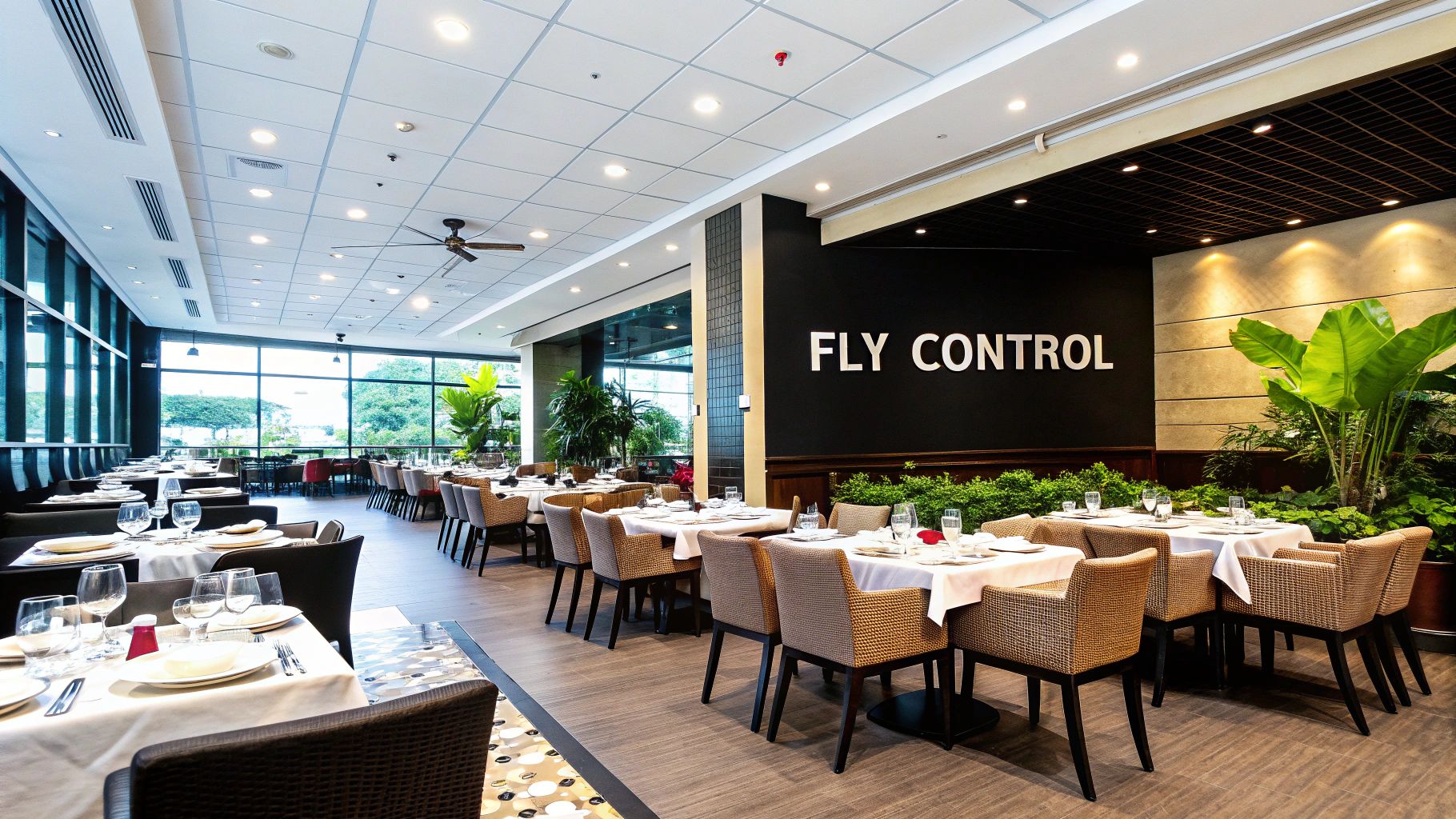
The moment a guest spots a fly, their perception of your establishment plummets. But the damage goes far beyond a bad review.
Flies are notorious carriers of bacteria and pathogens. Every time one lands on a prep counter, a cutting board, or a customer's plate, it can transmit diseases. This creates a public health hazard, which is why health departments are so strict about pest control.
The Real Risks of a Fly Infestation
Failing a health inspection because of flies is a nightmare scenario. It can lead to steep fines, a forced shutdown, and a permanent mark on your public record. Effective fly sprays aren't just about killing pests; they're about complying with health codes designed to prevent illnesses like salmonella and E. coli.
A reactive approach is a failing one. You have to get ahead of the problem. This is where a smart Integrated Pest Management (IPM) program comes in. It’s not about one magic solution, but a combination of tactics for long-term control.
- Sanitation: This is your first line of defense. Maintain a strict cleaning schedule for floors, drains, and your dumpster area to eliminate breeding sites.
- Exclusion: Block them out. Seal cracks in walls, fix torn window screens, and ensure doors aren't left propped open.
- Targeted Treatments: When you use a spray, make sure it’s a professional-grade, food-safe product, and use it exactly as directed.
- Modern Tools: Supplement your efforts with non-chemical solutions. Modern Lyfe’s fly fans create a simple air barrier that physically stops flies from landing on tables or entering through doorways.
When you treat fly control as a complete system, you're not just swatting flies. You're actively protecting your customers, your reputation, and your bottom line. Dropping the ball on this can lead to some of the most common and damaging https://modernlyfe.com/blogs/articles/restaurant-health-code-violations.
For a deeper dive into managing pests in a commercial setting, these expert pest control strategies for businesses offer valuable insights. A robust fly control plan isn't an expense—it's a fundamental part of running a successful restaurant.
Choosing the Right Fly Spray for Your Kitchen
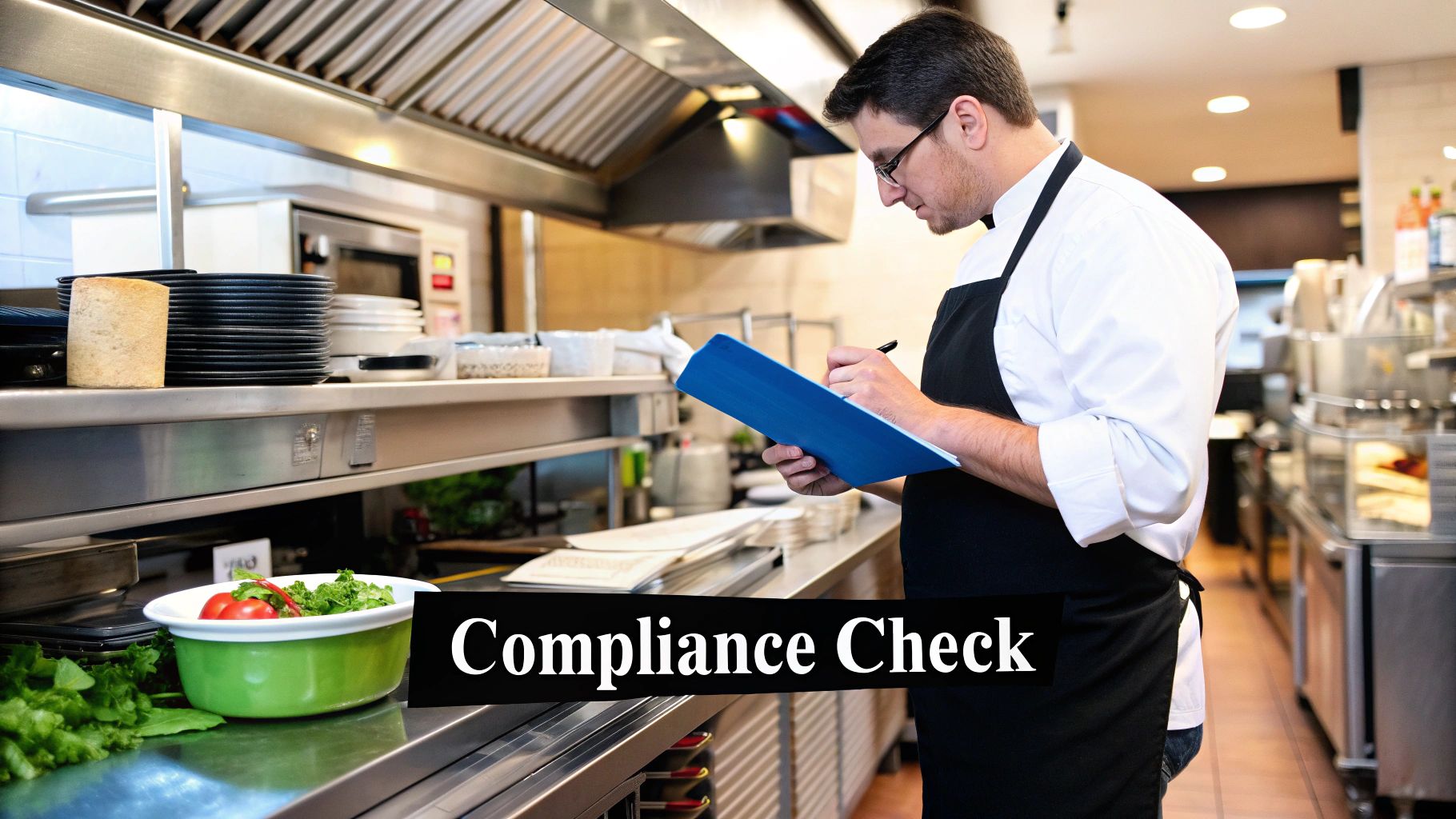
Grabbing any bug spray off the shelf is a huge mistake in a restaurant. A product that’s fine for a garage is a serious health code violation—and a customer safety nightmare—in your kitchen.
The world of commercial pesticides is complex. Choosing the right fly spray for restaurants means reading labels and understanding the difference between general-use products and those designed for sensitive food environments. This choice directly impacts the safety of your staff, customers, and reputation.
The wrong spray can contaminate food, trigger allergies, and lead to heavy fines from health inspectors.
Decoding the Active Ingredients
The first thing to check is the active ingredient. For most commercial kitchen sprays, the active ingredients come from two main categories, both derived from the chrysanthemum flower.
- Pyrethrins: These are natural, botanical insecticides known for their fast "knockdown" effect, zapping flies almost instantly. The downside? They break down quickly when exposed to light and air.
- Pyrethroids: These are synthetic, lab-created versions of pyrethrins. They’re engineered to be more stable, giving them a longer-lasting residual effect that can keep killing pests for hours or even days.
While both work, sprays with natural pyrethrins are often the better choice for areas where food is actively handled. Since they degrade faster, there's less risk of long-term chemical residue.
The "Food-Safe" Distinction
What does it mean when a spray is labeled "for use in food handling areas"? This is a critical designation from regulatory bodies like the EPA. It means the product, when used exactly as directed, is not expected to cause harm if it makes incidental contact with food surfaces.
Key takeaway: this does not mean you can spray it directly on a cutting board or food. It means the formula is approved for careful use in kitchens and dining rooms—as long as you follow the application rules to the letter.
Consider this scenario: A kitchen manager needs a heavy-duty solution for the back-of-house area near the dumpsters. A pyrethroid-based spray with a strong residual effect is a great choice for after-hours application to create a lasting barrier.
But for the dining room where a few flies sneak in during service? A fast-acting pyrethrin spray is the way to go. You can use it for a quick spot treatment with minimal odor and a much lower risk of lingering chemicals.
Here’s a quick breakdown of the different types of sprays.
Comparing Fly Sprays for Restaurant Environments
| Spray Type | Active Ingredients | Best For | Safety Notes |
|---|---|---|---|
| Contact Sprays | Pyrethrins, Piperonyl Butoxide (PBO) | Quick "knockdown" of visible flies in front-of-house or kitchen areas during lulls in service. | Minimal residue, but must not be used around open food. Best for spot treatments. |
| Residual Sprays | Permethrin, Deltamethrin (Pyrethroids) | Creating long-lasting barriers in non-food areas like entryways, window sills, and receiving docks. Applied after hours. | Never spray on food prep surfaces. Allow to dry completely before resuming operations. Requires good ventilation. |
| Space Sprays (Foggers) | Pyrethrins, Esfenvaluate | Treating entire rooms for severe infestations. Must be used when the restaurant is empty. | Evacuate the area completely. All food and surfaces must be covered or removed. Requires thorough cleanup and ventilation before reopening. |
| Natural/Botanical Sprays | Essential Oils (Peppermint, Lemongrass) | Sensitive areas or as a supplementary repellent. Good for front-of-house where chemical odors are a concern. | Less potent than chemical sprays and may require more frequent application. Generally food-safe but always check the label. |
Choosing the right product ensures you're using the most effective tool for the job without compromising safety. Always choose a product specifically labeled for commercial kitchen use. Think of it as a fundamental part of your restaurant's food safety program.
Mastering Safe and Effective Application
Picking the right fly spray for restaurants is step one. Knowing how, when, and where to use it separates an effective fly control plan from a health code disaster. Proper application isn't just a good idea—it's a must for keeping your food, staff, and diners safe.
The cardinal rule is: never spray when the restaurant is open or when food is exposed. This must be a strict policy. The only time to spray is after closing, once all food is sealed and stored, and every prep surface has been cleared and covered. Following this rule is the single most important thing you can do. You can get a deeper dive into these protocols by reading up on how to prevent food contamination in your restaurant.
Spraying wildly into the air doesn't work. It’s a waste of product and lets chemical droplets settle everywhere you don't want them. Be surgical with your application.
Before you spray, make sure you've chosen the right tool for the job. This infographic breaks down what to look for.
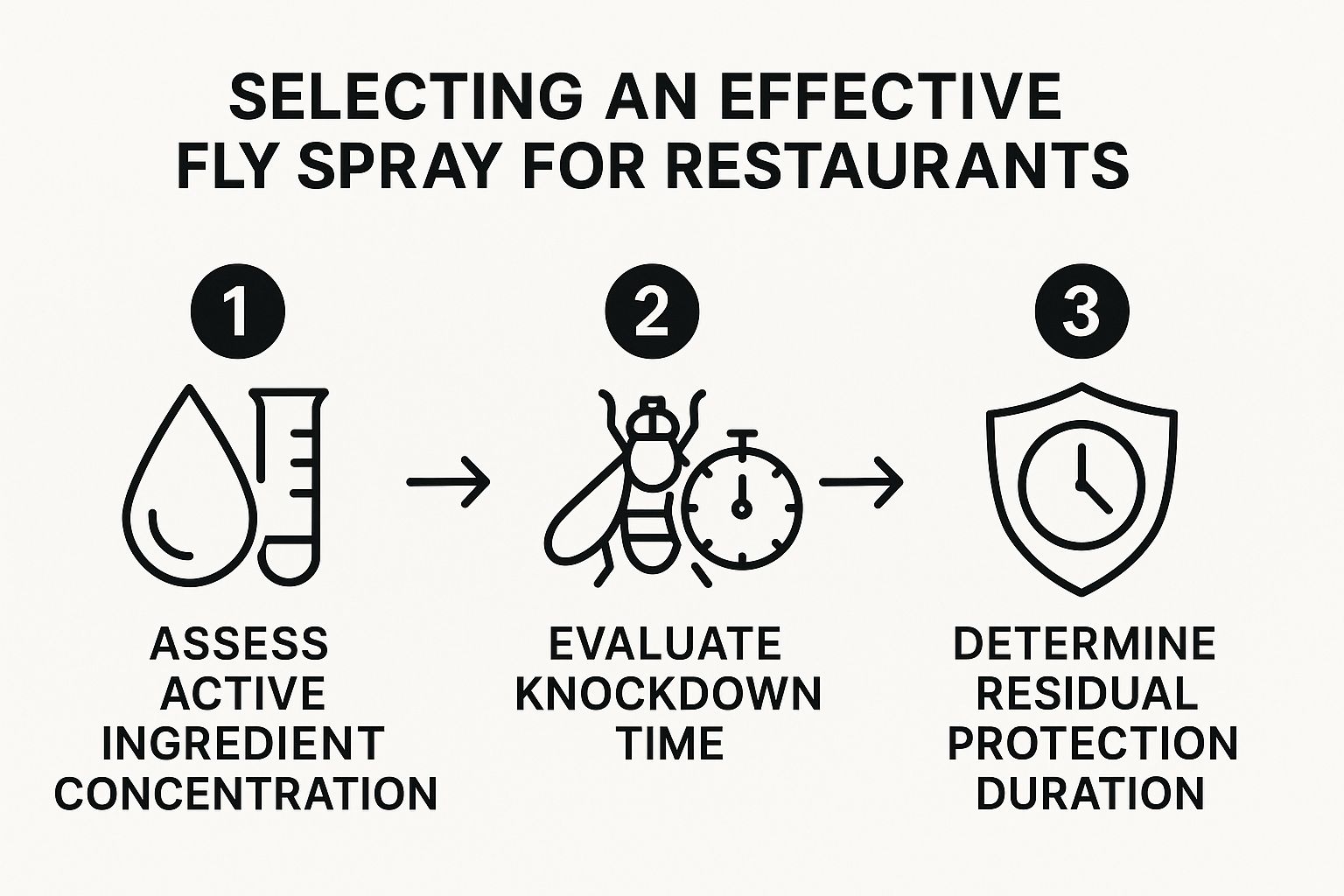
As you can see, it's a balancing act. You have to weigh the active ingredients against how fast the spray works and how long it lasts.
Pinpointing Harborage Areas
Instead of fogging your entire kitchen, target the places where flies live and breed, known as harborage areas. Go after the source to eliminate the problem.
- Drains: Floor drains are five-star hotels for flies. A direct spray into and around the drain at closing time can wipe out eggs and larvae.
- Garbage Areas: Hit the areas around indoor trash cans and your exterior dumpster pad with a residual spray.
- Under Equipment: Target dark spaces under ice machines, coolers, and prep tables—perfect hiding spots for flies.
- Receiving Docks: Your back door is the main entry point. Treating door frames and thresholds creates a barrier that stops flies before they get inside.
One cafe manager solved a persistent fly problem near his delivery door not with an expensive fogging service, but by having his closing crew spray the door frame and nearby trash bin each night. In less than a week, the problem was gone—without a drop of spray near a food prep area.
Ventilation and Re-Entry Protocols
When working with chemicals, air quality is critical. While spraying and for a short time after, get the air moving. Turn on exhaust fans or open windows in back-of-house areas to clear out fumes.
Equally important is the re-entry period. Every product is different, so read the label. It will state how long you must wait before it's safe for staff to re-enter the space—it could be 30 minutes or a few hours. Your opening crew should know to do a final wipe-down of non-food surfaces in the area before starting prep work.
Thinking Beyond the Spray Can
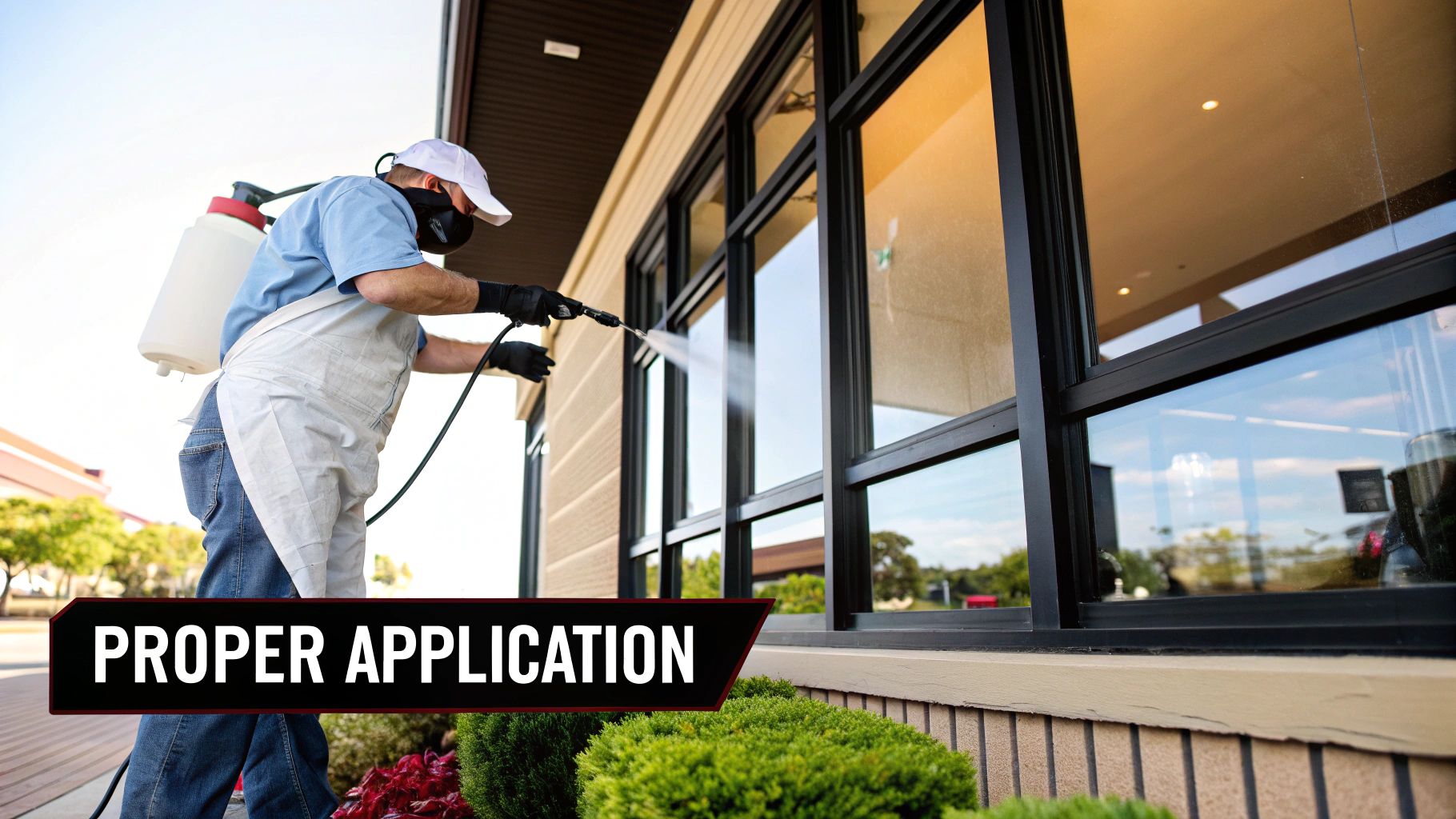
If your only tool is a can of spray, you’re always playing defense. While fly spray for restaurants is great for dealing with flies that are already inside, an effective strategy starts long before that.
The goal is to make your restaurant an unwelcoming place for pests from the start. This is the core idea of Integrated Pest Management (IPM)—shifting from a reactive to a proactive mindset. It’s about building layers of defense through smart sanitation, structural maintenance, and non-chemical tools.
Harnessing Airpower with Fly Fans
One of the best non-chemical tools is a simple fly fan. Flies are terrible pilots; even a gentle breeze makes it incredibly difficult for them to land or navigate.
Placing fly fans in the right spots can be a game-changer. They create a constant, quiet downdraft that flies can't push through.
- Entryways and Exits: A fly fan near a high-traffic door creates an invisible air curtain, physically stopping flies from buzzing in.
- Outdoor Patios: A single fan on a dining table can keep the entire surface clear, protecting guests and their food without chemicals.
- Buffet and Service Lines: A few fans placed along a buffet line will keep food pristine, improving both hygiene and guest perception.
The beauty of fly fans is that they work continuously without staff intervention. They are a silent, chemical-free guardian for your front-of-house areas, perfectly complementing the targeted, after-hours use of food-safe fly spray in the kitchen.
This one-two punch is incredibly effective. To learn how to place them in your space, check out our detailed guide on using fly fans for restaurants.
Building Your Preventative Defense
Your strongest defense comes down to good operational habits. A solid IPM strategy is built on sanitation and exclusion. The global fly repellent market is worth around USD 1.33 billion in 2024 because flies are a serious contamination risk, but you can drastically cut your reliance on sprays by making your restaurant an unappealing target. You can read more about fly repellent market trends on transparencymarketresearch.com.
Sanitation and Waste Management
Flies are attracted to moisture and decaying organic matter. Your sanitation schedule has to be rock-solid.
- Daily Dumpster Duty: Keep your dumpster area clean daily. Lids should be shut tight, and the pad underneath needs to be hosed down to eliminate spills.
- Drain Maintenance: Clean floor drains regularly with enzymatic cleaners to dissolve the gunk flies feed on.
- Immediate Spill Cleanup: Clean up food and drink messes the moment they happen, in both the kitchen and dining room.
Sealing Entry Points
Finally, take a walk around your building. Flies can get through the tiniest cracks.
- Check for gaps around window and door frames.
- Repair torn screens on windows or patio doors immediately.
- Seal cracks in the foundation or walls, especially where utility lines enter.
Combining these proactive measures with the smart, targeted use of fly spray creates a comprehensive system that protects your restaurant from every angle.
7 Common Fly Control Mistakes and How to Avoid Them
Even diligent managers can stumble with fly control. When you're busy, it's tempting to just grab a can and spray, but a simple misstep can lead to serious health and safety issues.
Let's walk through the most common mistakes to ensure you don't fall into the same traps.
Mistake #1: Using Residential Bug Spray in the Kitchen
This is a big one. Using a standard household bug spray in a commercial kitchen is a recipe for disaster. These products are not formulated or approved for food service environments.
They often contain chemicals that are illegal to use around food prep surfaces, leading to health code violations and risking customer health. Always use a product specifically labeled as a fly spray for restaurants.
Mistake #2: Spraying at the Wrong Time and Place
Even with the right product, timing is everything. Spraying directly over a prep line during service is a critical error.
Chemical fly control must happen after hours, when the kitchen is closed, all food is stored, and surfaces are cleared. Think of it as the final step in your closing routine, not a mid-shift reaction.
Mistake #3: Treating the Flies, Not the Problem
Spraying the few flies you see is just treating a symptom. If you don't find out why they're there, they will keep coming back, trapping you in an expensive cycle of buying more spray.
An effective fly control strategy is proactive. A fly problem is almost always a sign of a deeper sanitation issue that needs immediate attention.
Instead of reaching for the spray, play detective. Check these common fly hotspots:
- Clogged Drains: Gunk in floor drains is a prime breeding ground for drain flies.
- Dirty Dumpster Areas: A messy dumpster pad is an open invitation to every pest in the neighborhood.
- Hidden Spills & Crumbs: A little spilled soda under an ice machine can become a major breeding ground.
Taking 15 minutes to clean a clogged drain will do more to solve your fly problem than an entire can of fly spray for restaurants. By getting to the root of the issue, you break the breeding cycle and dramatically reduce your need for chemical sprays.
Common Questions About Restaurant Fly Control
Even with a solid plan, questions come up. Here are answers to some of the most frequent ones to help you feel confident in your approach.
How Often Should I Be Using Fly Spray?
There's no single answer; it depends on your situation and the product.
For routine prevention in a clean kitchen, a targeted spray during your nightly closing might be all you need. Hitting key spots like drains, trash cans, and loading docks can stop breeding cycles before they start.
If you're dealing with a full-blown infestation, you'll need to be more aggressive, potentially applying spray nightly until the problem is solved. Always read the product label for re-application instructions. Your ultimate goal is to eliminate the source of the flies, which will drastically reduce how often you need to spray.
Are Natural Fly Sprays Actually Effective?
Yes, when used in the right context. "Natural" sprays, which use essential oils like peppermint, are fantastic for minor fly problems and are my top recommendation for front-of-house areas.
You don't want a chemical smell in your dining room or patio. Natural sprays deter flies without ruining the guest experience.
However, for a serious problem in the back-of-house, you'll need something stronger. A commercial-grade, food-safe spray with an active ingredient like pyrethrins provides the fast, reliable knockdown you need.
The smartest strategy is an integrated one: use gentler, natural options in public areas and save the stronger, approved chemical sprays for after-hours use in the kitchen and storage areas.
Can Fly Fans Just Replace Fly Spray Altogether?
Not exactly. They work best as a team, playing two different but equally important roles.
- Fly Fans are your defense. They create a constant, non-chemical air barrier over doorways, service windows, and buffets to physically block most flies from getting in or landing on food.
- Fly Spray is your offense. This is your tool for taking out the stragglers that have already breached your defenses.
The most successful restaurants use both. They rely on fly fans for continuous protection and keep a quality, food-safe fly spray for restaurants ready for any intruders.
Ready to build a stronger, chemical-free line of defense against flies? Modern Lyfe offers a stylish and effective solution with our innovative fly fans.
Explore Modern Lyfe's Fly Fans and Create a Pest-Free Dining Experience

